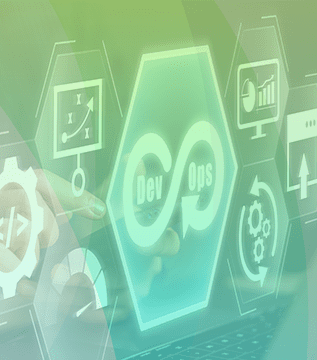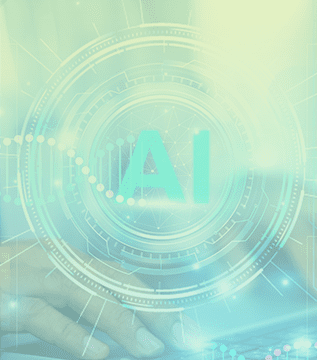
Talk
Leveraging Automation to Deliver High-Quality MedTech Software

This blog contains the video and a detailed summary of the conversation from our November 2nd CD-CE webinar.
What if we could use our consumer electronic devices, like smartphones, tablets and smartwatches, to aid in diagnosing ear infections, autism or COVID-19? Could we use our AirPods and our devices’ built-in microphones to monitor our lung health and body temperature? We’ve dubbed these scenarios, where clinical diagnostic measures are captured using the sensors built into consumer electronics such as smartphones and smart watches, as Clinical Diagnostics on Consumer Electronics (CD-CE), and they’re quickly approaching reality.
CD-CE democratizes access to care by moving clinical diagnosis out of Points of Care and into our Points of Living. Using the smartphones in our pockets as a diagnostic tool could dramatically improve healthcare outcomes through earlier diagnosis, help close the healthcare equity gap and allow us to collectively bend the healthcare cost curve.
To realize this healthier, more equitable future, CD-CE manufacturers face safety and clinical effectiveness concerns from regulatory bodies, as well as cost and ROI concerns from insurance providers – plus a host of technical challenges when addressing the sheer range of diversity in the smartphone market.
Orthogonal hosted a webinar overview of CD-CE on Wednesday, November 2, 2022, featuring first-hand accounts from entrepreneurs on the leading edge of this new class of diagnostics:
Our speakers, joined by Orthogonal’s CEO and Founder Bernhard Kappe, described the current landscape of CD-CE, what advantages it has over traditional diagnostics and the challenges it must overcome in order to democratize healthcare.
The following is a summary of the webinar’s discussion, edited for conciseness and clarity.
There are more than 6 billion smartphones in the world today, and that number is projected to reach 7 billion by 2024. There are significantly fewer doctors, healthcare providers and hospitals that can give people care when and where they need it. What if we could turn smartphones into a tool that people could use to diagnose their most common ailments? This is the central premise of Clinical Diagnostics on Consumer Electronics (CD-CE), a new digital health and diagnostics category that makes care accessible by meeting patients where they are with the tools they need to understand their health.
For this conversation, we had three guests, each deeply familiar with CD-CE, who presented different perspectives on what CD-CE can do and what it aspires to do:
Arna Ionescu Stoll’s company Wavely Diagnostics combines a smartphone speaker and microphone with a small paper ear tip to diagnose ear infections, one of the most common reasons parents take their children to the doctor. Wavely’s app is designed to engage children and make them feel more comfortable in a stressful situation.
Mike Connell represents ResApp, a telehealth companion app that captures a clinically accurate audio sample of a cough to allow the telehealth provider to rapidly diagnose and manage respiratory diseases. Mike notes that the microphones embedded into smartphones today may even be more powerful than the studio-quality microphones ResApp used for their initial research back in 2013. ResApp was acquired by Pfizer for $116 million USD1; as the first major exit in this category, it shows the great potential of CD-CE in terms of clinical outcomes and business results.
Dr. Michael Mina is the Chief Science Officer of eMed Digital Healthcare. eMed is a telehealth first aid kit for patients to use at home when talking to their doctor online. eMed seeks out the best home diagnostics solutions (including CD-CE) and packages them in a physical kit. They handle marketing and distribution, allowing innovative manufacturers to focus on improving their product. eMed provides access to a multitude of tools and live help that can help patients diagnose a variety of conditions.
Other examples of CD-CE include:
Scalability: Nearly all medical diagnoses require traditional (and often expensive) diagnostic tools that are costly to scale and entail a significant focus on distribution. In comparison, digital diagnostic tools can be scaled immediately – and by offering these tools on a smartphone, they’re instantly accessible.
Cutting-Edge Power: A smartphone’s sensor can be more powerful than the average clinical diagnostic tool. When augmenting these sensors further with hardware plug-in tools, as well as AI and Machine Learning algorithms, smartphones can emulate the computational and biological power of a modern-day clinic or lab – all in the palm of your hand. And when you consider that diagnostic tools like the stethoscope and otoscope were invented over 200 years ago, the potential for modern technology to push clinical diagnostics forward in new ways is huge.
Human-Centered Design: Diagnostic tools are generally designed to be administered to patients by a narrow subset of the population – trained doctors, nurses and other professional healthcare workers. CD-CE crafted with human-centered design at the forefront results in diagnostic tools that are accessible so that they can be administered (or self-administered) by anyone. A CD-CE app can guide patients, in partnership with their healthcare provider, through the diagnostic process and empower them with vital information needed to make informed decisions.
Regulatory: Much like Software as a Medical Device (SaMD), with which it shares similarities, CD-CE-specific regulations are still in their infancy2. Not only must CD-CE manufacturers and regulators keep up with changing technology and an ever-expanding array of devices, they must also consider evolving biological factors (i.e. a new strain of COVID-19, for a COVID-19 test kit) in detecting and diagnosing new illnesses. For CD-CE to democratize diagnosis, developers need to ensure that their apps work safely and accurately on the majority of smartphones out on the market.
Reimbursement: Demonstrating the value of any new health technology to potential payers is always a challenge. Should CD-CE manufacturers charge per test, or should they follow a subscription model like telehealth services? How can manufacturers communicate to healthcare providers that CD-CE will alleviate staffing shortages and clinic costs and lead to more efficient care delivery? This question is an evolving concern as more CD-CE companies reach the market stage.
Device Quality: There are thousands of different smartphone models and operating system combinations out in the world, and microphones, cameras and other sensors can vary greatly in quality. This market reality poses a challenge for CD-CE to reliably deliver accurate diagnoses. To ensure CD-CE apps can actually deliver care, testing infrastructure and robust validation systems are needed. Fortunately, most smartphones follow the same general design plan, and sensors are becoming more powerful in smartphone devices across the board, ranging from high-end to low-end.
How much information do we share with patients and how do we share it?
Most diagnoses aren’t binary yes-no answers, but patients aren’t trained clinicians who can interpret nuanced results.
How can CD-CE have the most impact on developing countries?
CD-CE could have enormous value in low-resource settings across developing countries, not only in the quality of their insights but also in their ability to scale.
What are the potential unintended consequences of CD-CE?
Like any new health technology, CD-CE needs to manage patient risk and prepare for any and all use errors or unforeseen outcomes.
What do our speakers want the audience to take away about CD-CE?
Mike Connell, ResApp: “There is enormous scope here to bring health insights to people when they need it the most, no matter where they are on Earth.”
Dr. Michael Mina, eMed: “As we look towards the future of healthcare, I’d urge us not to try to replicate the tools and processes that have already been developed, but to push into entirely new approaches that aren’t in the current lexicon of physicians or the healthcare system.”
Bernhard Kappe, Orthogonal: “We’re coming up with better regulatory and quality answers around software and software change. There are tools that make the regulatory landscape a bit easier to deal with than you might think. Regulators are also excited about the future, and are trying to come up with ways of enabling people to do things quickly and safely.”
Arna Ionescu Stoll, Wavely: “Healthcare has been in need of a change for a very long time, but we’ve been limited by the tools we have. Fundamentally, having medical devices, diagnostics and physical exams immediately accessible at scale is the technological foundation that has the potential to shift healthcare into a system that works.
Human-centered design is going to become critically important as we put diagnostics into people’s pockets. Plans made in offices or boardrooms aren’t going to shift the way things are done in the highly entrenched healthcare industry. We need human-centered design to ensure people can use these new tools, and understand how to integrate them into existing systems.”
Arna Ionescu Stoll, CEO and Founder of Wavely
Arna Ionescu Stoll, currently the CEO of Wavely Diagnostics, has spent her career at the intersection of design thinking, digital health and entrepreneurship. Throughout multiple decades, she has led the creation of dozens of high impact, innovative healthcare products that solve real human needs and integrate seamlessly into people’s lives. Arna has been a part of the digital health community since before the term “digital health” was coined, having founded and built the original Connected Health domain at IDEO, serving as Vice President of an early digital health startup that reached unicorn status and consulting with dozens of healthcare, digital health and medical devices companies.
Dr. Michael Mina, Chief Science Officer, eMed
Dr. Mina is the Chief Science Officer of eMed. Prior to eMed he was a professor of Epidemiology and of Immunology & Infectious Diseases at the Harvard T.H. Chan School of Public Health. He was also a professor in the Department of Pathology at Harvard Medical School and associate medical director of molecular virology at Brigham and Women’s Hospital. Dr. Mina’s research focused on how vaccines and infections impact how people’s immune systems respond to other infections, and how they impact the epidemiology and spread of infectious diseases, including outbreaks and pandemics. With colleagues at Princeton and the US National Institutes of Health he developed the idea of a Global Immunological Observatory that could serve as a “global weather system for viruses.”
Mike Connell, Vice President, Commercial, ResApp (Now owned by Pfizer)
Mike has over 30 years of commercial experience including 13 years of health leadership experience with GSK (Europe & Australia), Medibank (private health insurance) and consulting on a major global M&A project. As VP & General Manager of GlaxoSmithKlines’s (GSK) Established Product Portfolio in Europe, Mike launched this business which delivered a significant share of the £3Bn in global sales during 2014. Prior to this Mike was VP & General Manager, GSK Denmark and VP & Head of the Thrombosis Centre of Excellence (global medical/marketing strategic team). Before moving to Europe, Mike held roles as Sales Director, Marketing Manager Metabolics and Hospital & Oncology Sales & Marketing Manager at GSK Australia. Prior to his pharmaceuticals experience, Mike had a diverse commercial background with significant strategy, product, sales and marketing experience across many industries, including utilities (gas & electricity – TRU Energy), textiles, sporting footwear & apparel (Nike) and fast food (Red Rooster).
Bernhard Kappe, CEO and Founder, Orthogonal
Bernhard is a software development leader, technologist, and pioneer who provides clients with an unequaled advantage by helping them develop Software as a Medical Device (SaMD), Digital Therapeutics (DTx), and connected medical devices, while leveraging important trends and techniques at the leading edge of the adoption bell curve (e.g., agile software development, lean user experience, software product management, DevOps, lean startup, and open-source software). Bernhard has exclusively focused on the medical device and health-tech industry for almost a decade, working with clients to create innovative diagnostics, monitoring, and therapeutics solutions, while shortening product development life cycles, improving delivery predictability, and creating products that are financially and clinically successful.
Randy Horton, Chief Solutions Officer, Orthogonal
Randy has spent over a decade working with healthcare and life sciences organizations to tackle the Quadruple Aim: 1) optimizing health system performance by improving the individual experience of care, 2) advancing the health of populations, 3) reducing the per capita cost of care, and 4) enhancing the work-life of those who deliver care. Randy brings strong experience, expertise, and creative business thinking to his leadership role – along with nearly three decades of experience with Internet-enabled digital transformation and a passion for being a connector of people and ideas. He helps organizations break through to their “what’s next” by building new capabilities and launching innovative, digitally enabled – and highly successful – products and services.
1. Ang, A. (2022) Roundup: Pfizer finalises ResApp acquisition and more briefs, Mobi Health News. Mobi Health News. Available at: https://www.mobihealthnews.com/news/anz/roundup-pfizer-finalises-resapp-acquisition-and-more-briefs (Accessed: December 7, 2022). 2. CD-CE and SaMD have overlap, but some devices are just CD-CE and some are just SaMD.
Related Posts

Talk
Leveraging Automation to Deliver High-Quality MedTech Software

Talk
The Playbook for Running a Multi-Partner Engineering Organization

Talk
Bridging the Gap: SaMD Strategy for Teams Built on Hardware

Talk
FDA/CDRH Changes: How MedTech Companies Can Prepare Webinar Summary